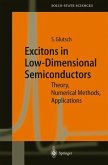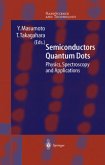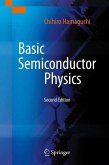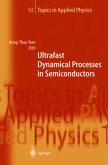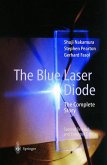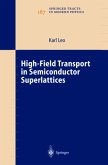The introduction of impurities, even in very small concentrations, in a semiconductor can change its optical and electrical properties entirely. This attribute of the semiconductor is utilized in the manifoldness of their applications. In this book, the progress on elucidating the physical properties of impurities confined in quantum structures are reviewed with an emphasis on the experimental aspects. The major results of various kinds of characterization, such as infrared spectroscopy, Raman measurements, luminescence characterization, perturbation spectroscopy and dynamical studies of the confined impurities are reviewed, but also the theoretical basis to calculate the electronic structure of the confined donors and acceptors are presented. This monograph also describes more specific aspects of the confined impurities such as the properties in the high doping regime and the effects of hydrogen passivation.
The dramatic impact of low dimensional semiconductor structures on c- rent and future device applications cannot be overstated. Research over the last decade has highlighted the use of quantum engineering to achieve p- viously unknown limits for device performance in research laboratories. The modi?ed electronic structure of semiconductor quantum structures results in transport and optical properties, which di?er from those of constituent bulk materials. The possibility to tailor properties, such as bandgap, strain, band o?set etc. , of two-dimensional (2D) semiconductors, e. g. quantum wells, for speci?c purposes has had an extensive impact on the electronics, which has resulted in a dramatic renewal process. For instance, 2D structures are today used in a large number of high speed electronics and optoelectronic appli- tions (e. g. detectors, light emitting diodes, modulators, switches and lasers) and in daily life, in e. g. LED-based tra?c lights, CD-players, cash registers. The introduction of impurities, also in very small concentrations, in a semiconductor can change its optical and electrical properties entirely. This attribute of the semiconductor is utilized in the manifoldness of their app- cations. This fact constitutes the principal driving force for investigation of the properties of the impurities in semiconductors. While the impurities in bulk materials have been investigated for a long time, and their properties are fairly well established by now, the corresponding studies of impurities in quantum wells is a more recent research area.
The dramatic impact of low dimensional semiconductor structures on c- rent and future device applications cannot be overstated. Research over the last decade has highlighted the use of quantum engineering to achieve p- viously unknown limits for device performance in research laboratories. The modi?ed electronic structure of semiconductor quantum structures results in transport and optical properties, which di?er from those of constituent bulk materials. The possibility to tailor properties, such as bandgap, strain, band o?set etc. , of two-dimensional (2D) semiconductors, e. g. quantum wells, for speci?c purposes has had an extensive impact on the electronics, which has resulted in a dramatic renewal process. For instance, 2D structures are today used in a large number of high speed electronics and optoelectronic appli- tions (e. g. detectors, light emitting diodes, modulators, switches and lasers) and in daily life, in e. g. LED-based tra?c lights, CD-players, cash registers. The introduction of impurities, also in very small concentrations, in a semiconductor can change its optical and electrical properties entirely. This attribute of the semiconductor is utilized in the manifoldness of their app- cations. This fact constitutes the principal driving force for investigation of the properties of the impurities in semiconductors. While the impurities in bulk materials have been investigated for a long time, and their properties are fairly well established by now, the corresponding studies of impurities in quantum wells is a more recent research area.


